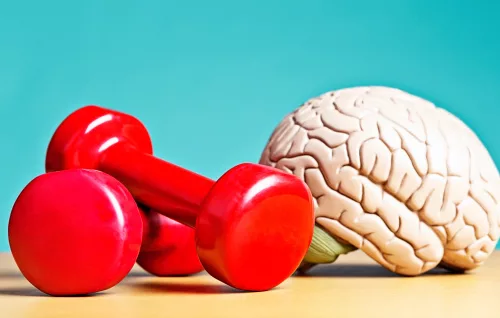
Strength training, also known as resistance training, is all about improving muscle strength, endurance, and size. Think weightlifting, using resistance bands, or even bodyweight exercises like push-ups. If you’re looking to get stronger, leaner, and more powerful, this is your go-to.
Cardio exercises, on the other hand, get your heart pumping and your blood flowing. These activities include running, cycling, swimming, or anything that gets your heart rate up. Cardio is all about endurance and heart health. It’s that morning jog or spin class that leaves you sweating buckets, feeling that glorious runner’s high.
Historically speaking, strength training has ancient roots. Picture Greek and Roman athletes lifting hefty objects during sporting events. Fast forward to the late 19th and early 20th centuries, and you see strength training evolving with the rise of bodybuilding and weightlifting competitions. Cardio didn’t fall behind either; running became popular in ancient civilizations, while the jogging craze took off in the 1960s and ’70s.
In today’s fitness culture, both strength training and cardio hold equal importance. They’re like peanut butter and jelly—the perfect combo. Strength training is essential for building muscle mass, boosting metabolism, and improving physical strength. Meanwhile, cardio works wonders for cardiovascular health, burning calories, and lifting your mood. Together, they offer a balanced approach to fitness, ensuring you not only look good but feel amazing too.
Benefits of Strength Training
Building muscle mass and enhancing physical strength is a key advantage of strength training. If bigger and stronger muscles are your goal, incorporating exercises like squats, deadlifts, and bench presses into your routine is essential. These exercises target multiple muscle groups and help in overall physical development.

Improving metabolism and aiding in weight control are other significant benefits. The more muscle mass you have, the higher your metabolic rate will be. That means you’ll burn more calories even when you’re chilling on the couch. Strength training makes your body a more efficient calorie-burning machine, aiding weight management.
Strengthening bones and joints through resistance training is crucial, especially as you age. Weight-bearing exercises promote bone density and joint stability, reducing the risk of osteoporosis and other bone-related issues. Think of it as giving your skeletal system an extra layer of protection.
Mental health gets a boost too. Engaging in regular strength training can help reduce stress, anxiety, and even symptoms of depression. Exercise releases endorphins, the body’s natural mood lifters, making you feel happier and more relaxed. Plus, seeing your progress in the mirror can do wonders for your self-confidence.
Scientific studies back these claims. Research shows that strength training offers benefits ranging from improved metabolic health to better mental well-being. For example, a study published in the Journal of Strength and Conditioning Research found that adults who engage in resistance training have a lower risk of developing cardiovascular disease. So it’s not just about looking good—it’s about feeling good and staying healthy.
Benefits of Cardio
Improving cardiovascular health and endurance is where cardio shines. Activities like running, cycling, and swimming help your heart work more efficiently, pumping blood and oxygen throughout your body. This not only improves your heart health but also boosts endurance, making everyday activities feel easier.
Burning calories and aiding in weight loss is another major perk of cardio exercises. Whether it’s a brisk walk or an intense spin class, cardio gets your heart rate up, helping you burn calories faster. This makes it a great option for those looking to shed some pounds and tone up.

Enhancing lung capacity and respiratory function is yet another benefit. Cardio workouts challenge your lungs, improving their capacity and efficiency. Over time, you’ll find it easier to breathe during physical activity and even in day-to-day tasks. This can also lower your risk of respiratory issues.
Elevating mood and alleviating symptoms of depression and anxiety are powerful mental health benefits of cardio exercises. The ‘runner’s high’ isn’t a myth. Regular cardiovascular workouts release endorphins, those feel-good chemicals in your brain, helping you manage stress better. Plus, the routine itself offers a mental break, which can be incredibly therapeutic.
Supporting evidence from scientific research is plentiful when it comes to cardio’s benefits. Numerous studies highlight how cardio exercises contribute to overall well-being. For instance, a study published in the British Journal of Sports Medicine found that regular aerobic activity can significantly reduce symptoms of anxiety and depression. This isn’t just good news; it’s great motivation to lace up those running shoes!
Strength Training Vs. Cardio: Key Differences
Strength training and cardio both offer unique benefits, but they work differently when it comes to calorie burn and metabolism. Cardio exercises, like running or cycling, burn a high number of calories during the workout itself because they elevate your heart rate. Strength training, however, helps with long-term calorie burn by building muscle, which in turn boosts your metabolism. Think of cardio as your quick calorie burner, while strength training is your long-term investment in staying lean.
When it comes to muscle development, the two are quite different. Cardio exercises primarily improve cardiovascular endurance and overall fitness but don’t do much for muscle building. Strength training, on the other hand, is specifically designed to increase muscle mass and strength. If you’re aiming for muscle definition and bulk, grabbing the weights is the way to go.
Exercise intensity and duration also vary between these two types of workouts. Cardio exercises can be sustained over longer periods and can range from moderate to high intensity, making them excellent for endurance training. Strength training typically involves shorter, high-intensity bursts of activity with rest periods, focusing on exertion rather than endurance.
Body composition changes differently depending on your focus. Cardio is great for reducing overall body fat and improving cardiovascular health, while strength training helps in maintaining or increasing muscle mass. Combining both can give you the best of both worlds—lower body fat and increased muscle, resulting in a toned physique.
Interestingly, despite their differences, these two forms of exercise complement each other well. Cardio exercises improve heart health and endurance, preparing you for more intense strength training sessions. Meanwhile, strength training builds the muscle that supports better performance in cardio activities. Together, they offer a balanced, comprehensive approach to fitness.
Choosing the Right Workout for Your Goals
Identifying personal fitness goals is the first step in crafting an effective workout plan. Are you looking to gain muscle, lose weight, improve endurance, or perhaps a mix of everything? Knowing what you want makes it easier to tailor your exercise routine. For muscle gain, focusing more on strength training is key. If shedding pounds is your goal, incorporating more cardio could be beneficial.
Combining strength training and cardio offers the most balanced approach. For example, you could do strength training three days a week and cardio two days a week. This ensures you get the benefits of both without overtraining any particular aspect. A balanced routine is not just about alternating days; it could also mean integrating both into the same session. Think of circuit training, where you alternate between weightlifting and short bursts of cardio.
Customizing exercise routines to fit your individual needs and preferences is essential for long-term success. Some people love running while others prefer lifting weights. The best workout is the one you enjoy and are likely to stick with. Mix it up to keep things interesting. Maybe throw in some yoga for flexibility or a fun dance class to get your heart pumping.
Expert tips can help refine your weekly workout plan. Start by setting clear, achievable goals. Don’t just aim to ‘get fit’—be specific. Aim to run a 5K, lift a certain weight, or even just be active for 30 minutes a day. Also, listen to your body. Rest is crucial for recovery and preventing injuries. Pay attention to how you feel and adjust your routine accordingly.
Real-life success stories can be incredibly motivating. Many people have transformed their lives by finding the right balance between strength training and cardio. Seek out stories or even talk to a trainer for professional insights. Hearing about others’ experiences can provide that extra push you need to stay committed to your fitness journey.






Hey,
This is a really informative article, especially for people who are just taking up fitness training.
I think it’s great to do both strength and cardio training and put a schedule together for the week on when you’re going to do one or the other.
Strength for me helps build muscle and cardio helps me get rid of the belly fat (although I’m nowhere near where I want to be 🤣).
I’ll keep going though and I’ll let you know how I am getting on.
Thank you for sharing and keep up the great work.
All the best,
Tom
Thank you for your thoughtful comment! I’m glad you found the article helpful. It’s fantastic that you’ve found a balance between strength and cardio training—both are so important for overall fitness. Building muscle and shedding fat takes time, but your dedication will definitely pay off. Keep pushing toward your goals, and I’d love to hear about your progress! Thanks again for your support, and I’ll keep sharing more tips to help along the way. Keep up the great work too! 💪